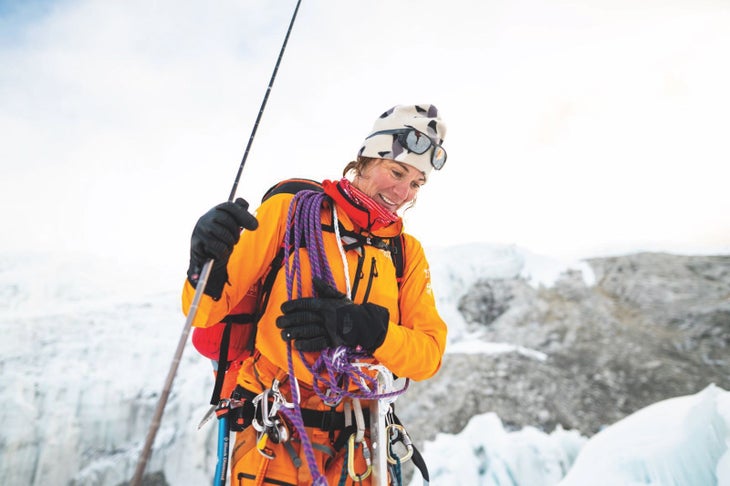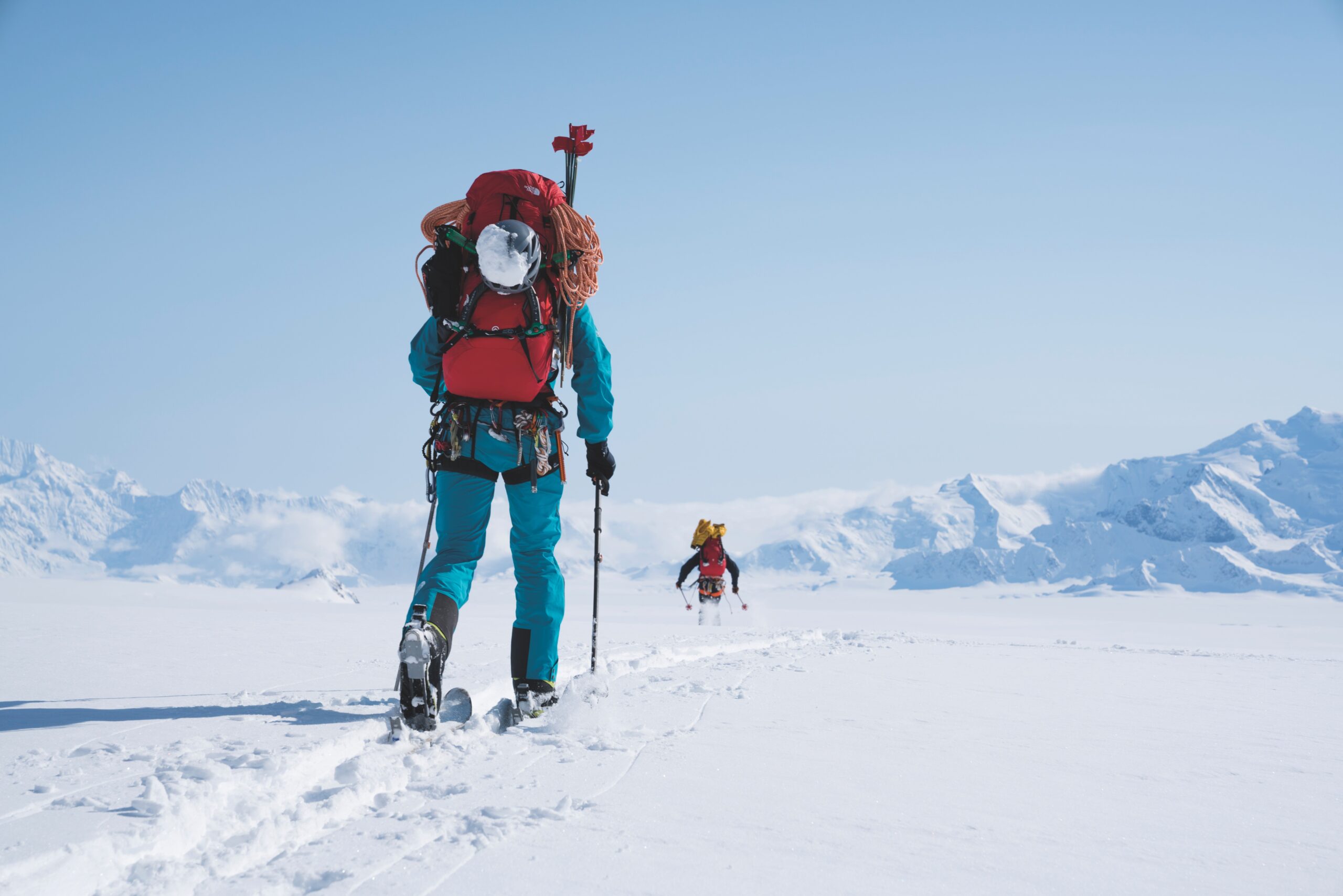Words like “game changer” and “disruptor” get tossed around a little too easily these days, but with FutureLight, its patent-pending new waterproof/breathable technology, The North Face says it has a product to back up those superlatives. In fact, the brand believes so strongly in the material’s unprecedented breathability that it created an entire manufacturing program around it, including dedicated factory spaces in Korea. Said Scott Mellin, global GM of The North Face’s Mountain Sports division, “We had to develop our own yarn, weaving process, and lamination and finishing techniques. It took us two years to do all of that.”
Moreover, by fall 2020, The North Face will have transitioned all of its higher-end apparel, footwear, and other waterproof/breathable gear in the Mountain Sports lines from Gore-Tex and other third-party vendors to FutureLight (price point items will still use TNF’s proprietary DryVent, and Gore technologies will still appear in the lifestyle collection).
Even the technology’s debut was unconventional. The North Face launched it today, not at an outdoor industry event but at the Consumer Electronics Show in Las Vegas, partnering with BMW Group Designworks for a camping trailer display.
Why all the investment? It’s partly due to athlete feedback and the desire to find a better solution to the ongoing conundrum of protection versus breathability. And part of it comes from a serious effort at brand differentiation. “My job is to create the biggest amount of difference between The North Face and our competitors,” said Mellin, who came on board full-time in January 2017. “And the way to create difference is to step out of the supply chain.”
The FutureLight Technology
At the heart of FutureLight lies an industrial process known as nanospinning. A polymer is sprayed through up to 220,000 tiny nozzles—rather than being extruded into a thin sheet of film, as most membranes are—to create a waterproof yet highly porous mesh-like membrane. The construction allows for nanoholes that allow air to pass through and moisture vapor to escape, keeping users dry and comfortable, not clammy and cold. Five different weights of membrane—depending on how many nozzles are used—allow designers to tune a garment’s level of breathability to the type of activity it’s intended for, added Mellin.
True, some other membranes make use of nanospinning, such as Polartec NeoShell and Outdoor Research’s AscentShell. But citing stats from TNF-initiated third-party comparison testing, Mellin said that FutureLight outperformed them.
Because the mesh is so delicate, The North Face’s material science and sourcing teams ended up designing custom face and backing fabrics—56 in all—as well as a new laminating process to give garments enough structure and shape. Some of these fabrics use higher denier yarn for greater abrasion resistance along with an open weave structure for more air permeability and lighter weight.
It adds a green story to FutureLight, too, as all new fabrics use 100 percent recycled materials. Motivated to increase the sustainability factor even further, The North Face also created a new PFC-free DWR treatment that maintains 80 percent of its water repellency after 80 wash cycles (and requires no consumer applications of water-polluting retreatment).
A bonus byproduct of the technology: FutureLight garments have a remarkably soft, quiet hand and mechanical four-way stretch.
FutureLight Field Testing
North Face athletes have been using FutureLight in extreme conditions around the world, but the real proof is in the numbers, acquired both through in-house and third-party testing. Said Mellin, “What we typically see in most garments is air permeability at 0.01 to 0.1 cubic feet per minute. FutureLight has between 1 to 2 CPM. That’s the magic zone for allowing heat to dissipate through the garment without affecting its windproofness.” (By comparison, he noted, a soft shell typically has 25 CPM). Underwriters Laboratories, which primarily tests first responder gear, determined that FutureLight exceeds the waterproof standard used for firefighter uniforms.
Retailers who have previewed the product give it high marks, too. Said Wes Allen, owner of Sunlight Sports in Cody, Wyoming, “It’s the best breathing waterproof/breathable I’ve ever been in.” While having to posthole out of deep snow when snowboarding recently, “I didn’t unzip a thing,” he continued. “My goggles fogged, my helmet got really wet, but there wasn’t a single drop of moisture inside my jacket.”

Will FutureLight Surpass Gore-Tex as the Gold Standard?
How will this new technology affect The North Face’s longstanding partnership with Gore, which dates back to the 1977 introduction of TNF’s Mountain Jacket? Mellin said he’s been forthcoming about the company’s emerging technology platforms and that The North Face remains committed to using Gore-Tex in its lifestyle division. Yet, he added, “FutureLight is the most advanced breathable waterproof technology in the world. It’s a quantum leap forward in performance and sustainability. We firmly believe it is better than Gore-Tex in every technical aspect and provides the consumer with a completely new system of benefits.”
When asked for a statement, Gore responded simply, “Gore does not engage in speculation about other brand’s technologies nor publicly discuss details of its relationship with licensees.”
For Fall 2019, The North Face will introduce 37 SKUs with FutureLight, including outerwear, single-wall tents, and gloves and mittens. Look for more innovation in different categories down the pipeline.
Is all the hype justified? Noted Allen, “You want to be a little cynical about this—we’ve all been down this road before—but this time I think there’s actually something really different. I don’t mean to sound like a complete fan boy, but it’s great stuff.”


